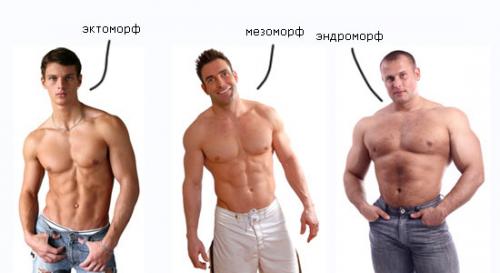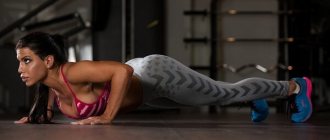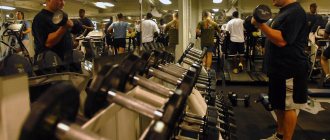5
(3)
The most common question I get asked about cardio exercise has nothing to do with which type is best (steady-state activity, interval activity, etc.)
Or what form of exercise is best (running, jumping rope, spinning) but rather what is the best time to do cardio for benefits and maximum weight loss.
Now this question implies two very important things that greatly influence my answer:
- Firstly, there are actually certain times of the day to do cardio workouts, which are more effective in terms of burning fat tissue and causing excess weight loss.
- Secondly, there are other times of the day that are less effective in reaping the same weight loss benefits from exercise and should therefore be avoided.
Because of the above two important conditions, I have two different answers to this question.
Cardio in the evening or morning. Cardio: evening or morning
When to run? If your goal is to strengthen your heart muscle, the best time to run is during the day. But that's not what we're talking about today. The day is not the best time to burn the sides, because the blood is full of glucose. And until all the glucose is used up, the sides will remain in place. By the way, for the same reason, it is often said that the effect of running begins to work only after the 20th - 40th minute of running.
But not everything is so simple. So, if you lift weights, your blood sugar levels will be very low after a barbell workout. So, don’t exhaust yourself by running before training with a barbell. 5-10 minutes for warming up is enough. And put off fully exhausting yourself on the track until the end of the workout.
Is it possible to eat after cardio training: what and when to eat. Nutrition rules for cardio training to burn fat. How much food should you eat? A set of products for the first and second meals. https://fitnesdlyapohudeniya.com/fitnes-dlya-pohudeniya/chto-est-do-i-posle-kardio
Run in the morning. Let's return to our glucose again. During the night we used it up for vital functions. Yes, at night we breathe, the heart pumps blood through the veins, we need to maintain body temperature. A lot of energy is spent on this. By the way, during the day our muscles are destroyed and grow not during training, but in our sleep. This consumes so many calories. So morning is a great time to run. Take VSAA to save our muscles from destruction, or, as a last resort, eat egg whites. And run forward.
Running in the evening. It seems that the situation should be the same as during the day. Although. Yes, we need 20-40 minutes of training to burn glucose, after which the training will start working. But the burning of fat on the sides occurs not only during training, but also for a very long time after it. After all, the body needs to recover. This also requires energy. But we can only take it from fat if a late dinner is not in your plans. So if a late night snack doesn't meet you post-workout, replenishing your sugar levels. Feel free to wear sneakers.
Evening cardio. Pros and cons of evening cardio training
Each athlete chooses the time for training independently based on his own schedule of work and type of awakening. There are athletes who enjoy running in the morning and feel energized for the whole day. And there are athletes who find it very difficult to wake up an hour earlier and go for a morning run. You will feel even more cheerful all day after this.
There is no need to overpower yourself if your body is not ready to train hard in the morning. Nothing but disappointment will come of it. After all, evening aerobic exercise also has its advantages:

- evening training is suitable if you adhere to the rule “do not eat after 6”;
- there is a habit of eating at night;
- if you don’t have time to run in the morning, it’s better to do an aerobic activity in the evening than not to do it at all;
- ventilation of the lungs promotes rapid falling asleep and sound sleep throughout the night;
- After an evening workout, the body still continues to break down fats during sleep.
However, such aerobic exercises also have their disadvantages:
- In the evening the roads are smoky, and it is no longer easy to find a suitable route;
- Parks can be dangerous in the evening;
- passers-by watching the run may cause discomfort;
- if a person works out at a club, then he has to wait in line for the exercise equipment;
- It's hard to go to the gym after a hard day at work.
Fasted cardio: burning fat or muscle?

Cardio training done on an empty stomach is a great way to get rid of body fat. However, given that they are performed on an empty stomach, not only fat is lost, but also muscle tissue. To engage in such training, you need to weigh the pros and cons of this approach to burning fat.
Cardio training plays a significant role in fat burning. Fat becomes a source of energy after glycogen depletion, which occurs as a result of prolonged cardio exercise, when the heart rate reaches 60-70% of the maximum. Based on this feature of the workout, it is logical to assume that doing cardio without breakfast, that is, on an empty stomach, can speed up the burning of subcutaneous fat.
The effectiveness of fasted cardio
There is no clear opinion on how effective morning cardio training performed on an empty stomach is. Disputes on this topic have been going on for a long time. Both supporters and opponents cite the results of scientific research, biological processes and mechanisms occurring in the human body as evidence of their rightness. Research by scientists also shows conflicting conclusions. To come to any decision, you should take a closer look at how energy is spent during training.

The source of energy expended during both anaerobic and aerobic exercise is carbohydrates accumulated in the body, that is, glycogen. This happens until its reserves run out. In the morning hours its level is minimal. If a person does not have breakfast, protein catabolism begins to occur. Proponents of fasted cardio cite this fact as an argument for using fats instead of carbohydrates when performing a morning workout.
However, we should not forget that the body is the last to begin to “part with” its reserve energy reserve, which is fat. And even if glycogen is at zero, for some time it will not be the fat layer that will be consumed, but proteins - muscle tissue. Therefore, when you perform cardio on an empty stomach, you lose both fat and muscle. This is especially important for those who not only want to lose weight, but also lift weights in an effort to gain a beautiful and firm body. People who fundamentally need to preserve muscle mass are advised not to exercise on an empty stomach, but to have breakfast.
Professional athletes who take part in competitions resort to fasted cardio to speed up the fat burning process. However, the concept of “on an empty stomach” is conditional for them, since they consume amino acids before training. This avoids the consumption of muscle protein as an alternative source of energy.
Fasted cardio as part of a training program
Doing cardio without breakfast is recommended in the following cases:
- upon reaching a “plateau” - a reduced rate of burning fat deposits against the backdrop of the body’s adaptation to changes in diet and exercise;
- after a complete restructuring and adaptation to a sports program that has already been used for a long time.
It is recommended to resort to “fasted” cardio on a temporary basis with certain breaks. Regular exercise will lead to the body adapting to this regime. The main thing to remember is that muscle loss is inevitable, and in some cases, depending on individual characteristics, lethargy and fatigue may occur.
To have breakfast or not after fasted cardio
A common mistake made by those practicing this type of training is to completely skip the morning meal. Many people believe that if you don't eat before lunch, the effect you get from fasted cardio will increase. This approach is fundamentally wrong.
The lack of food in the first half of the day serves as a signal to the body for an upcoming hunger strike. It triggers the mechanism of fat accumulation. Consequently, muscle mass is lost, and the energy received from subsequent meals is instantly deposited in the fat layer.
A carbohydrate breakfast after cardio training allows you to avoid this. This type of eating not only blocks the fat storage program, but also significantly reduces the loss of muscle mass. But even taking such measures, you should not perceive this type of physical activity as a full-fledged fat burning training.
To start the process of burning fat, it is not enough just to do cardio training, you also need to reduce the number of calories you consume. If the calorie content of the daily diet remains high, even the most intense workouts will not be able to compensate for the excess energy entering the body with food, and the result will be practically zero.
conclusions
So, the conclusion suggests itself. In order to get the maximum fat-burning effect from cardio and spend as little time as possible bringing the body to the beginning of a correct and effective rhythm of work, it is best to do cardio in the morning, immediately after waking up, on an empty stomach (in this case, we do not count a portion of fast protein for meals).
If it is not possible to do cardio in the morning, it is best to use the time after strength training.
- Tweet
Cardio workout. Benefits of Cardio Exercise for Burning Fat
Cardio training (or aerobic training) occurs due to the energy that is obtained during the oxidation of glucose molecules with oxygen. This is the main difference from the power load, where energy is produced in an oxygen-free manner. Therefore, during cardio, not only the muscles are trained, but also the entire cardiovascular system.
Cardio training is especially useful for those who are just starting to get into fitness. They prepare your heart for heavier workloads. What else are aerobic exercises good for?
Benefits of Cardio Exercise:
- Calories are burned, which facilitates and speeds up the weight loss process.
- Endurance increases, you will be able to withstand increasingly heavy loads (this will also be useful to you in everyday life).
- Metabolic and metabolic processes are accelerated.
- Lung strength and volume increases.
- The functioning of the cardiovascular system improves and the risk of disease decreases.
- Immunity increases.
- Relieves stress and psychological tension.
- You will get a boost of vivacity and energy for the whole day.

Heart rate during cardio workout to burn fat
In order for cardio training to be effective, you need to exercise in the fat burning zone. The so-called fat burning zone is within 65-85% of the maximum heart rate (HR). The higher your heart rate, the more calories you will burn. The heart rate range at which fat burning is achieved is calculated using the following formula:
Heart rate max = 220 – age (this is the maximum allowable heart rate value)
Next, we calculate the fat burning zone, it is located in 65-85% of heart rate max:
- Lower limit: HR max * 0.65
- Upper limit: HR max * 0.85
Example:
Let's say your age is 35 years old
220-35=185 (your heart rate max)
- Lower limit of fat burning zone: 185 * 0.65 = 120
- Upper limit of fat burning zone: 185 * 0.85 = 157
Those. To burn fat during cardio training, your heart rate should be between 120-157 beats per minute (example for age 35).
If your heart rate is below the calculated values, then fat burning during exercise will not be achieved. If your heart rate is above the maximum allowable value, then you are training not for fat burning, but for endurance.
To measure your heart rate during cardio training, it is better to use a heart rate monitor. If you don’t have one, you can measure your pulse yourself during class. To do this, count the number of beats in 15 seconds and then multiply the resulting value by 4. This will give you the value of your heart rate.
Strength training in the morning. Target
What do you want to achieve from going to the gym? Everyone knows what they want, and you are no exception.
Correctly selected time for training helps to achieve faster results.
Gaining weight and burning fat are the most desired goals that are stuck in the minds of many people who decide to work on themselves and change for the better.
- Fat Burning
The human body is designed in such a way that after waking up, blood sugar levels are lowered and metabolism is accelerated.
If you exercise early in the day, fat will become the main source of energy, not carbohydrates. Therefore, you can burn much more fat in the morning than during an evening workout.
If you exercise before breakfast, your body will lose more calories than after breakfast.
But it must be said that if you exercise on an empty stomach, you will lack strength, and therefore you will quickly get tired. Therefore, do not overload your body, otherwise you will drive it into a state of stress.
Thus, morning exercise will be much more effective if you decide to lose weight. But you need to approach the training process wisely and correctly calculate the load.
Useful article: How to burn fat, not muscle, when cutting.
- Mass gain
Evening workouts help gain muscle mass and increase strength. Hormones such as testosterone and cortisol are known to have a strong effect on muscle gain. While testosterone promotes muscle growth, cortisol, on the contrary, destroys muscle fibers.
Testosterone levels after evening workouts are much higher than after morning workouts. The level of cortisol, known as the stress hormone, on the contrary, is much lower in the evening than in the morning.
Therefore, by training in the evening, you are likely to gain muscle mass much faster than by training in the morning.
Is it possible to exercise early in the morning? How to exercise in the morning
Beginning athletes are often interested in the question of how to exercise in the morning and conduct effective training. Regardless of the sport you practice, the morning time is excellent for physical activity, it is only important to follow some recommendations.

Instructions
1
If you want to exercise in the morning, get into the habit of getting up at the same time. The most optimal time for athletics or fitness training is from 6 to 10 am. At this time, the body is full of energy and strength that can be directed in the right direction. Morning workout enthusiasts have more advantages in this than those who prefer to train in the evening.
2
You should exercise in the morning an hour or two before work or school. You should not be distracted by thoughts about future affairs. At the same time, after training you should have enough time to take a breath and relax a little: if you immediately go to work, you can easily become overtired.
3
30 minutes before training, take a protein-carbohydrate complex, also known as a gainer. This safe nutritional supplement is sold in all sports nutrition stores. This is necessary to activate energy processes and prepare muscles for intense training. A serving of quickly digestible whey protein should be at least 30 g.
4
Those who prefer to exercise in the morning should take a responsible approach to drawing up a training program. You shouldn’t burden yourself with one and a half hour or more classes; it’s better to do quick (40-60 minutes) but intense workouts. If you think that, for example, you do not have time to work out all muscle groups in such a time, increase the number of workouts per week from 3 to 4-5. However, this should be done by already experienced athletes.
5
Immediately after your workout, take another 30g of whey protein to help your muscles recover faster. Be sure to take a hot shower to properly circulate the blood throughout your body. An hour after finishing your workout, you can have breakfast, which should also consist of proteins and carbohydrates in equal measure. Depending on your training goals, it is recommended to eat small meals 4-5 times a day at regular intervals.
Effective cardio strength workouts, both in the morning and in the evening. Why do cardio?
Cardio training (or simply cardio) is training aimed at increasing the level of functioning of the cardiovascular system to improve the health of the heart, lungs, and musculoskeletal system.
Additionally, cardio workouts:
- increase blood flow to body tissues, thereby accelerating metabolic processes and promoting weight loss
- develop endurance
- increase muscle strength and elasticity
- help improve overall physical condition
Therefore, cardio is what you need if you are pursuing the following goals:
- weight loss and fat burning
- drawing the body relief
- strengthening the cardiovascular system
- keeping fit
The most popular types of cardio are:
- run
- jumping rope
- swimming
- exercise on elliptical trainers
- a ride on the bicycle
- skiing
- roller skating or ice skating
- aerobics

Cardio can be combined with other types of physical activity, for example, with strength training or with health systems such as yoga, stretching, Pilates, to improve muscle tone and burn subcutaneous fat.
Cardio training can include a number of types of physical exercise, which allows you to keep it varied and interesting.
What is the best time to swing? Best time to train
The right time for physical activity allows you to achieve the highest possible results. If it is inappropriate, the effectiveness of training is either sharply reduced or turns out to be practically zero. To determine the best time to go to the gym or jog, you need to focus on your goal - losing weight, gaining weight. You should exercise at those hours that help keep your body in good shape, burn fat, or, conversely, gain muscle mass.
Scientific research

There is a lot of research on what is the best time to exercise. This topic interests scientists around the world. Many years of research have made it possible not only to study this issue, but also to come to certain conclusions that allow trainees to achieve better results.
Research by American scientists has shown that the choice of time for training should be based on the physical characteristics of a person’s structure:

- Ectomorphs. People with this body type have a high metabolic rate. They are naturally predisposed to thinness and experience certain problems in gaining weight, including muscle mass, which causes difficulties for those who want to build up decent muscles. The best time for ectomorphs to exercise is in the evening, when they are full of strength and energy.
- Mesomorphs. People with an average body type have no tendency to be either overweight or thin. This is due to the normal metabolic rate. Mesomorphs, according to the study, can exercise in the morning, afternoon, and evening hours. It all depends on the person’s own wishes and availability of free time.
- Endomorphs. People with the third body type often suffer from excess weight. Metabolism in their body is very slow. In order not to suffer from extra pounds in the form of body fat, they should exercise in the morning. The optimal and best period is considered to be from 7 to 10 hours, when the amount of glycogen with glucose is minimal and energy for exercise is released due to the oxidation of the fat layer.
Researchers from Williamsburg conducted an experiment. It consisted in the fact that training was carried out at 8, 12, 15 and 20 o'clock. At each time period, several people trained with heavy weights. The participants in the experiment were people who had not previously played sports. This study found that the best time for strength training is the evening.
This conclusion is natural. Muscle fibers are more susceptible to contraction and rapid work in the evening hours, since the temperature of the human body in the evening hours is much higher than in the morning or afternoon. In addition, the effectiveness of resistance training is determined by testosterone and cortisol levels. The first is responsible for the destruction, and the second is responsible for the increase in muscle mass.
At rest, testosterone is high in the first half of the day, but the most effective increase from resistance training occurs in the evening hours. And if a person wants not only to play sports, but also to become the owner of impressive muscle mass, it is recommended to perform strength exercises in the evening hours. Exercising at this time brings maximum benefits and allows you to increase muscle mass.
People who want to get rid of excess weight and body fat should exercise in the morning. This period of time is characterized by high levels of cortisol, but there are some nuances here that should definitely be studied by all those who want to become slimmer.
Workouts for those who like to get up early in the morning
For a person who wakes up early in the morning and feels cheerful, energetic, and full of strength, morning workouts are most suitable. Of course, such activities have their own characteristics. In the morning, body temperature is reduced. This means that the joints with ligaments are not completely elastic, so active exercises do not bring much effect and are not recommended. Gymnastics with yoga is the best choice for early training. They don't require a lot of energy and allow you to feel energized all day long.
Burning fat - from seven to nine in the morning

These two hours are best for doing cardio and burning fat. Cortisol is quite high from 7 to 9 am, and glycogen = quite low, so during training, energy is taken from the fat layer. Morning workouts are best done within forty minutes. The intensity should be medium. A person who does not have problems with the heart or blood pressure can exercise in half the time, but at a more accelerated pace. You should focus on your own well-being, since not all people can engage in any activity in the morning.
Aerobic exercise - from 15.00 to 16.00
During this hour-long period of time, body temperature rises and reaches its peak at approximately 17.30. This period is best suited for aerobics, dancing, jogging, fitness, and cycling. This activity not only has a good effect on fat burning, but also strengthens the cardiovascular and respiratory systems.
Strength and high-intensity training - from 17.00 to 18.00

From five to six in the evening it is best to exercise with weights. This time is ideal for visiting the gym, as well as high-intensity and interval training. Such activities require maximum endurance, and in the evening both body temperature and testosterone levels rise higher. A person feels a surge of strength and this has a positive effect on the workout.
What workouts are best done after 19.00?
After seven in the evening, body temperature begins to decrease again. To get the maximum benefit from classes, it is best to devote this time to bodyflexing, stretching, tai chi, and yoga. These types of physical activity have a calming and healing effect, help strengthen deep muscles, develop flexibility and endurance, help form beautiful and correct posture, and have a beneficial effect on the psyche.
Summarizing
The timing of your workout depends on many factors. The first thing that needs to be taken into account by a person who decides to start going to the gym, lose weight or, conversely, gain muscle mass, is his body type. In most cases, it determines the purpose of the lesson. The results that a person wants to achieve also influence when exactly it is best to exercise. To lose weight, it is best to exercise in the morning. Evening is more suitable for gaining muscle mass. However, if you have not previously played sports, it is better to first visit a doctor, which will allow you to accurately determine the absence of contraindications to certain types of physical activity.










